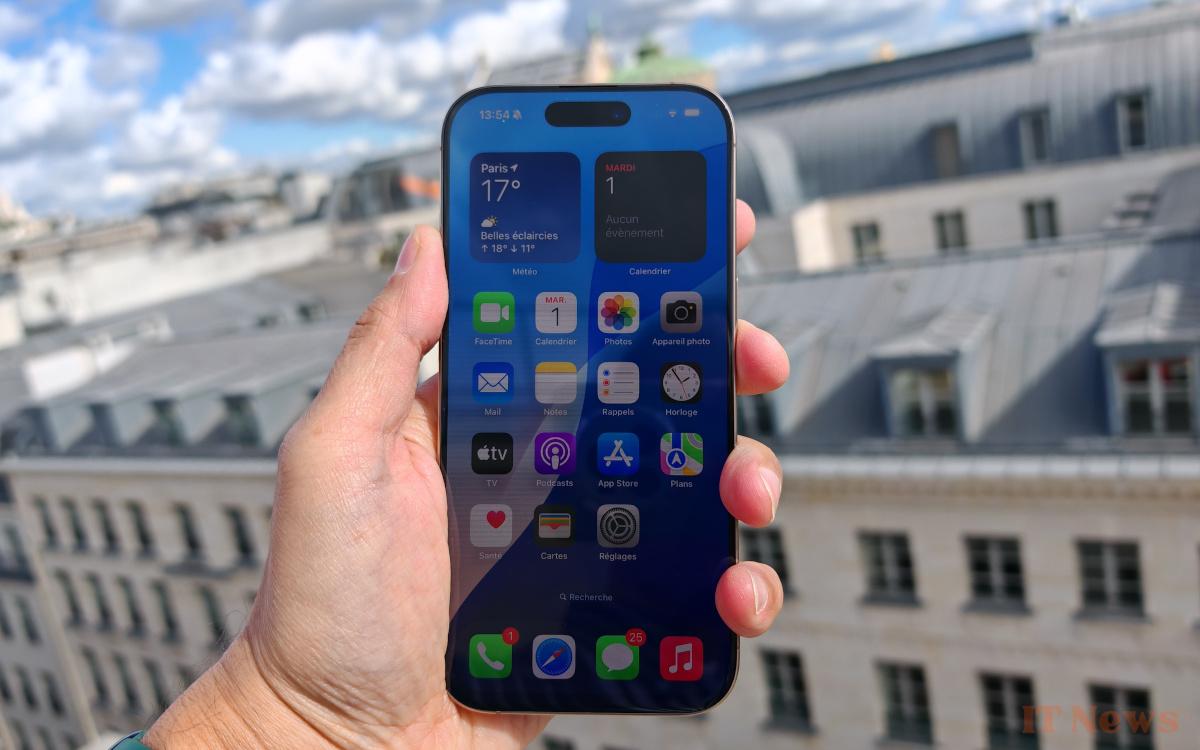What if the next iPhone cost the price of a small car? Rumors are running wild, but some experts are cautious: Apple has more than one trick up its sleeve to avoid disaster. Get out your wallet... but don't panic.
As the Trump administration's new tariffs shake the markets, speculation about iPhone prices is reaching new heights. Some analysts are talking about models costing $3,500, but conflicting voices point out that Apple has mastered the art of financial evasion. Deciphering a crisis that could ultimately remain under control.
On Wednesday, April 9, the United States is implementing massive import tariffs: +54% on Chinese products, where 90% of iPhones are assembled. A measure that, according to Rosenblatt Securities, could cause the price of the iPhone 16 Pro Max 1TB to jump from $599 to $850, and that of the iPhone 16 Pro Max 1TB from $1,599 to $2,280. Enough to send Apple fans into a shiver. However, Bloomberg journalist Mark Gurman remains skeptical of these worst-case scenarios.
Apple reportedly has a solution to avoid excessive price increases.
For Gurman, a $3,500 iPhone is "pure clickbait." In his Power On newsletter, he lists the levers the company has to cushion the blow: negotiating discounts with its suppliers, reducing its profit margins (currently around 45%), or discreetly adjusting its prices. Another major asset: a strategic stockpile of products already shipped to the United States, exempt from the new taxes. Enough to gain a few months before a possible increase.
Diversifying the supply chain will also play a key role. While India and Vietnam (taxed at 32% and 46% respectively) cannot replace China overnight, Apple has been accelerating its local expansion for months. A $1.4 billion factory has just opened in Hosur, India, while Vietnam is already assembling AirPods. The objective: to reduce the Chinese share below 70% by 2026.
Behind the scenes, the company is reportedly negotiating targeted exemptions with the US government, particularly on certain components. A common practice under Trump, as in 2020 during the trade war against Huawei. Another possibility: Brazil, where taxes are only 10%. Apple already has assembly lines for the iPhone 15 there, and could expand its production.
Then there remains the question of consumers. While Dan Ives, an analyst at Wedbush, predicts a price surge as early as May, Angelo Zino (CFRA Research) believes that Apple will limit the increase to 5-10%. The company could also smooth out costs internationally by passing on some of the taxes to European or Asian markets. A risky strategy, but possible in the short term.
A race against time on the stock market
On Wall Street, uncertainty is hurting. Apple's stock plunged 15% in one week, wiping $450 billion off its valuation. Investors fear a slowdown in sales if prices rise too high. However, Gurman points out that Apple has the means to absorb some of the costs, especially on the Pro models, where margins are the highest.
The ball is now in Tim Cook's court. Will he announce a price increase at the next keynote? Nothing is less certain. As a reminder, Apple has already announced the date of its next conference, WWDC 2025, and it will be held on June 9, a few days after the release of the Nintendo Switch 2.
As a reminder, in 2019, faced with similar taxes, Apple preferred to cut its margins rather than increase its prices. A choice that paid off: iPhone sales increased by 7% the following year. In the meantime, fans can breathe easy: a $3,500 iPhone is clearly not happening anytime soon, unless of course the company launches the famous foldable iPhone, which is already generating a lot of buzz.





0 Comments